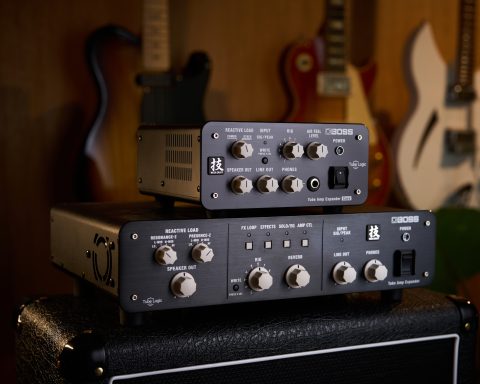Playing acoustic guitar doesn’t limit you to a plain sound or preclude you from pedal effects. From functional units that ensure a robust performance to the stompbox exotica that takes your sound to the outer reaches, here’s a guide to the essential acoustic guitar effects, how to use them, and the best order for your signal chain.
Unplugged and Plugged
If the unplugged purity of wood and wire is all you want from an acoustic guitar, we’ll let you return to the simple life. Perhaps you’re a hardened road warrior, genre-jumping producer, blue-sky thinker, or sonic maverick. Why should electric guitar players have all the fun? Dipping a toe into the modern acoustic effects pedal scene could be an eye-opener.
The hardware you place between your guitar and the amp’s input jack can be a game-changer. Whether you’re looking to perform confidently, break out of a songwriting rut, sculpt a signature tone, or make your studio work stand out, the tools are at your fingertips.

Why Use Effects Pedals with Acoustic Guitar?
Most acoustic players come to effects pedals to either solve a problem or make a statement. Perhaps you’ve stepped up to larger venues and want to avoid feedback. Maybe your setlist has six songs in alternate tunings, and you lose the crowd while wrangling the machine heads. Perhaps you’ve noticed that all your demos sound the same. There’s a pedal for all these scenarios and more.
In fact, for a market many guitarists don’t even realize exists, the array of acoustic effects pedals may be surprising. At the outset, splitting these pedals into three conceptual categories makes sense. Some acoustic guitar pedals are practical and designed for onstage housekeeping. These include the preamp that optimizes your tone to the tuner that lets you drop into DADGAD.
"Some acoustic guitar pedals are practical and designed. Other pedals are creative but functional. Then there are the wildcards."
Other pedals are creative but functional, changing the format of your guitar parts without altering the sound. The best example is the BOSS Loop Stations that have exploded since the millennium. Then there are the wildcards. These effects flavor your centuries-old acoustic tone with reverb, chorus, delay, octaves, tremolo, and more. Regarding this last category, remember that while there’s conventional wisdom, don’t let anyone tell you what you’re doing is wrong. You’ll even find guitarists pairing acoustics with extreme overdrive to head-turning effect.
Best Pedals for Acoustic Guitar
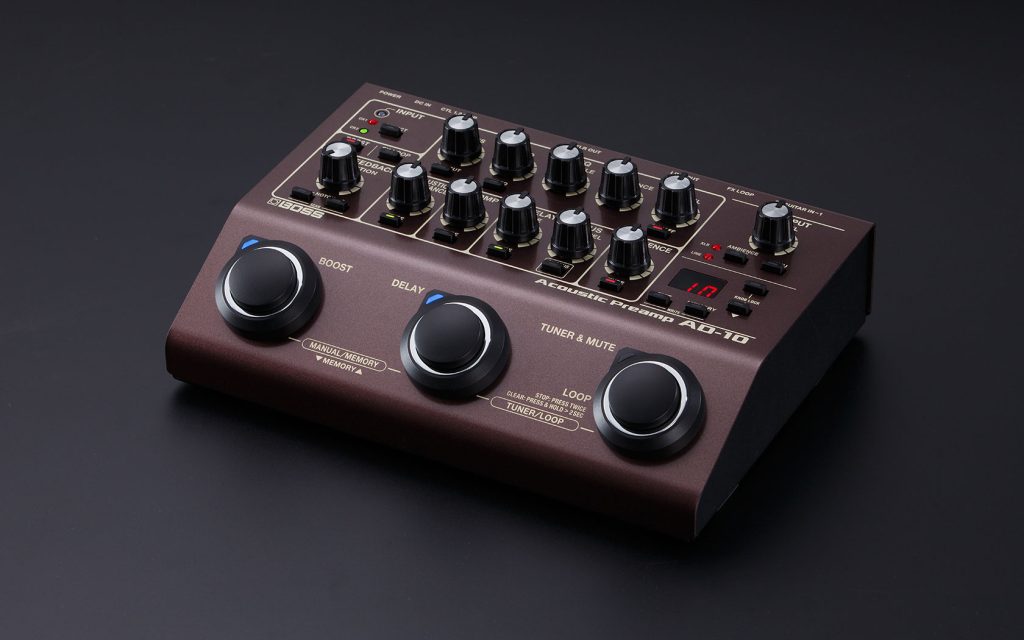
Acoustic Preamp
If you work the local live circuit, you’ll dread certain venues for their house PA. Even if the gear is solid, the speakers might not be great for acoustic. Your subtle tone will suffer more than a rock band, rendered flat, lifeless, and unnatural. An acoustic preamp like the AD-2 or AD-10 is a gigbag-sized solution. It will compensate for sub-par piezo pickups with the Acoustic Resonance feature. This sends a balanced signal to the PA and banishes feedback with the notch filter.
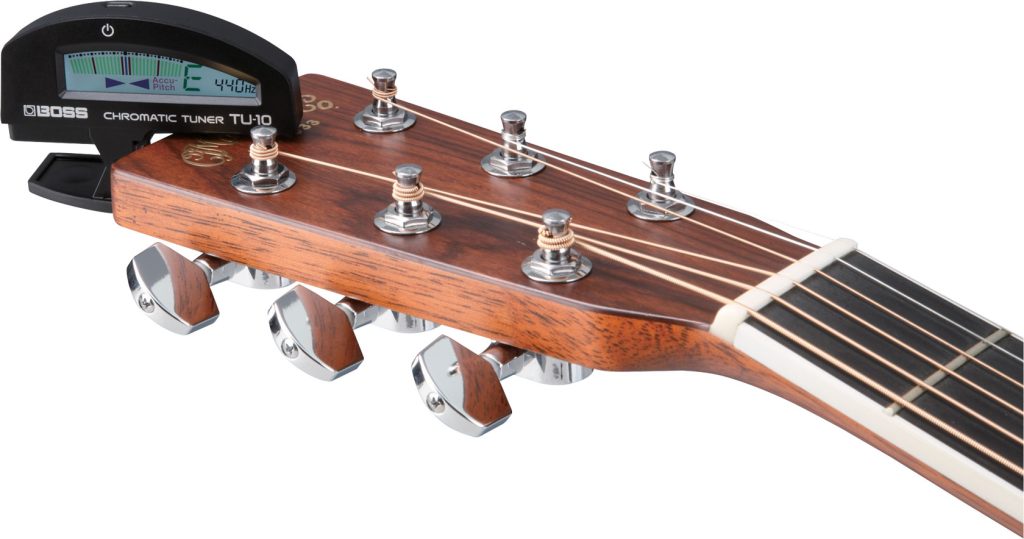
Tuner
If you’re an acoustic singer-songwriter, you’re likely using capos and alternate tunings. Both of these spell regular pitch adjustments that need to happen quickly and accurately. For impromptu unplugged gigs, you’ll get along fine with a simple headstock tuner like the TU-10. Still, a pedal tuner like the TU-3 will take a weight off your mind for larger amplified gigs. It mutes your signal as you slip effortlessly into Open G using the at-a-glance LED display.
"Sculpting your acoustic sound via a standard three-band EQ is the first step to sounding good when amplified."
EQ Pedal
Sculpting your acoustic sound via a standard three-band EQ (bass, mid, and treble) is the first step to sounding good when amplified. You should be all set if you’ve chosen a professional acoustic amp like the BOSS AC-22LX or Acoustic Singer. The dashboard EQ dials unlocking bottom or bite as required. But if it’s your guitar and the PA, you’ll improve your tone with a pro-EQ-equipped preamp like the AD-10 or the forensic control of the seven-band GE-7.
Compressor
A solid compressor is often the difference between a fist-tight acoustic performer and a set that sounds flabby and unfocused. Choose a unit like the CP-1X, and you’ll discover countless applications. These range from the obvious (evening dynamics) to the unexpected (acting as a clean volume boost when you hit a solo).

Octave Pedal
Adding a high or low octave to the note you’re playing is as striking today as when Jimi Hendrix popularized the effect in the late 1960s. If you feel a little exposed onstage, a stompbox like the OC-5 is a great way to add some sonic complexity. Indeed, the Poly mode even lets you play full chords with the octave effect. Alternatively, you can choose to process the low notes only.
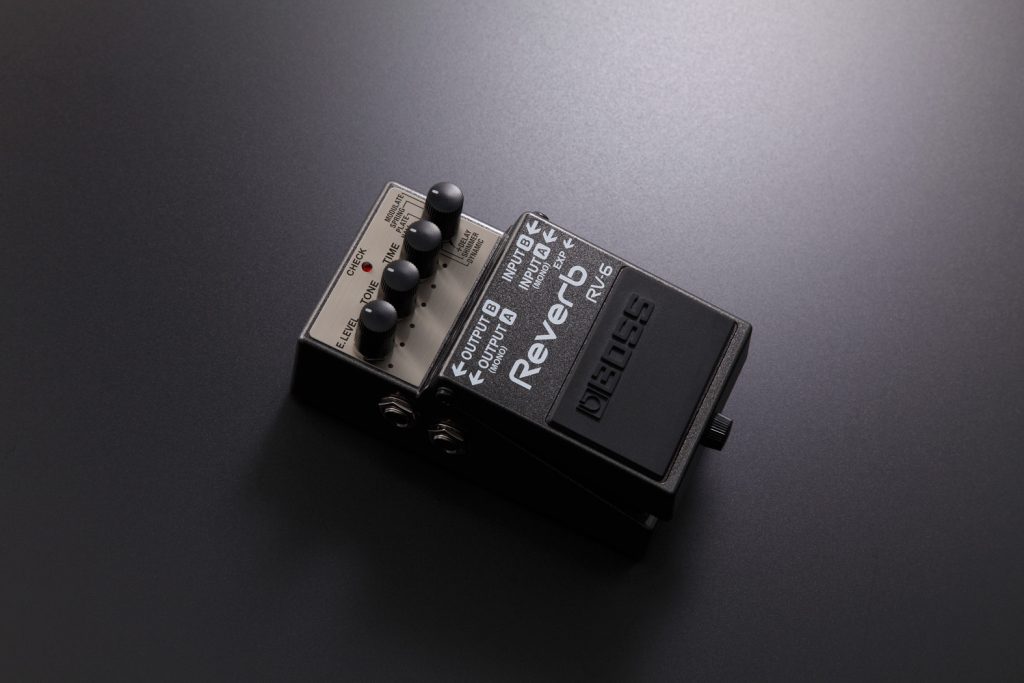
"The bathroom-tile shimmer of reverb makes chords and fingerpicked lines more atmospheric and professional."
Reverb
Perhaps the most popular effect amongst acoustic players, the bathroom-tile shimmer of reverb makes chords and fingerpicked lines more atmospheric and professional. The BOSS AC-22LX and Acoustic Singer amps offer the effect via the dashboard controls. Still, if reverb is a cornerstone of your sound, a dedicated stompbox like the RV-6 goes deeper. It will give you access to eight different sound modes and Time/Tone dials for fine-tuning.
Chorus
By making tiny changes to pitch and timing while retaining the original tone, chorus is an effective tool for acoustic players. The effect can make your six-string sound like a twelve if you voice it right. In a one-person show, this effect’s subtle layering and depth draw an audience in. This is especially true if you choose a unit like the CH-1 and run the stereo output to dual amps.
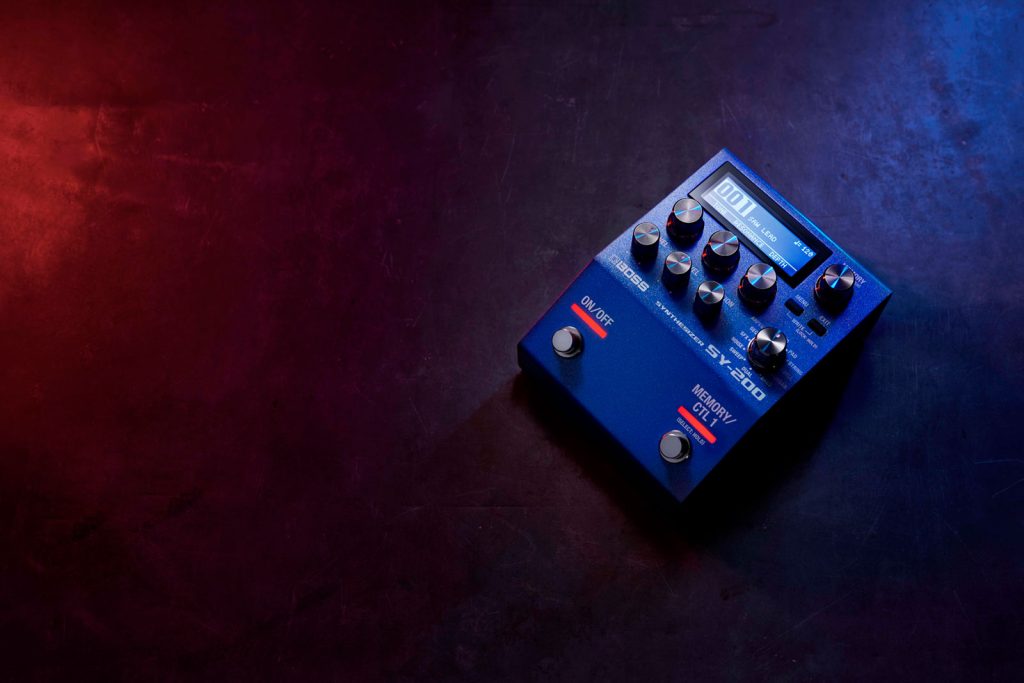
Delay
Along with reverb, delay is one of the most common pedal effects on an acoustic guitarist’s board. Delay adds depth and filling space if your solo show feels a little bare. Choose a stompbox from the BOSS series of digital delays, and you’ll have forensic control over this striking effect. Dial up anything from a subtle repeat to epic vintage echoes that evoke acoustic great John Martyn.
"An IR pedal like the IR-200 can capture and instantly recall the tonal minutiae of your favorite sonic setup."
Effects Pedals for Acoustic Singer-Songwriters
If you play solo acoustic guitar, it’s likely you also sing, and modern effects pedals can make your vocals stand out. The BOSS VE-8 Acoustic Singer supports the instrumental side of performance with features like Acoustic Resonance, reverb, chorus, tuner, and feedback-cancelling notch filter. It will also grow your confidence with harmonizer doubling, distortion, and electronic voices.
Best Looper for Acoustic Guitar
If you’ve taken the pulse of the live scene since the millennium, you can’t have missed the looping boom. Shortly after BOSS launched its first Loop Station in 2001, artists from Ed Sheeran to KT Tunstall took the concept overground, filling stadiums with little more than a guitar and some big ideas.
Of course, electric players are welcome at the party. Still, looping is most closely associated with acoustic solo artists. These players benefit from the ability to layer guitar parts in real time to create ambitious soundscapes. The Loop Station line has evolved alongside the shifting needs of the live scene. In the modern range, you’ll find everything from the streamlined RC-5 stompbox to the ultra-advanced RC-600. Both can make a single acoustic guitar sound like a symphony.
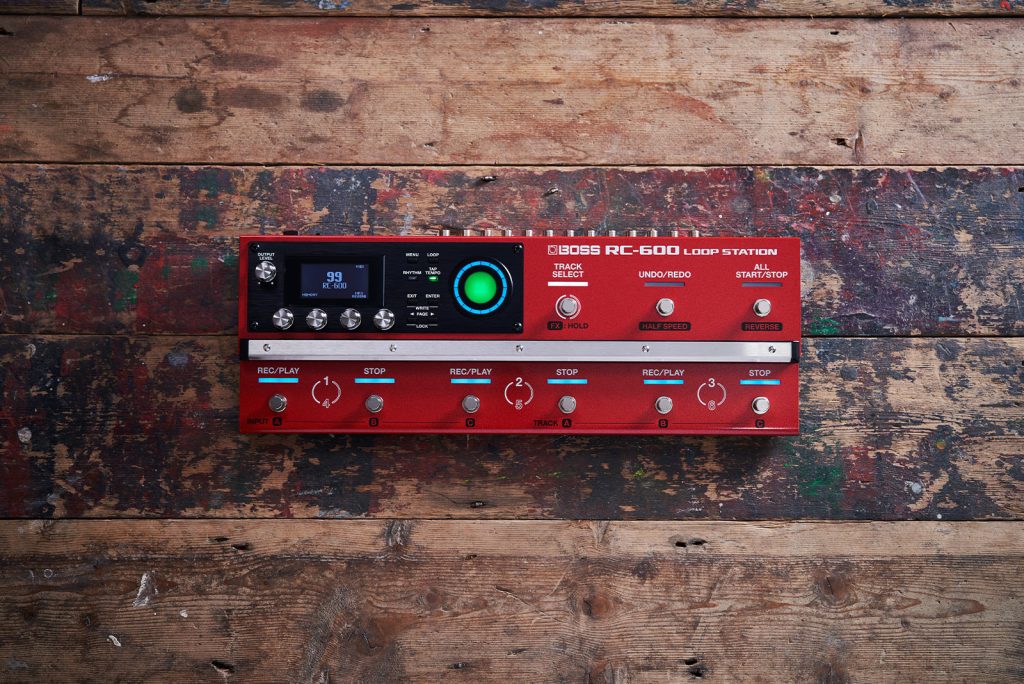
"Looping is most closely associated with acoustic solo artists. These players benefit from the ability to layer guitar parts in real time."
Comparing Acoustic Guitar Amplifiers to Individual Effects
The best acoustic amplifiers offer more than just volume. Check out the control panels of leading models like the BOSS AC-22LX or Acoustic Singer. You’ll find many features and effects, from reverb to loopers and feedback control with technology from the original pedals.
So, does that mean you don’t need individual pedal effects, simply an excellent acoustic amp? That entirely depends on who you are as a musician and the role that effects play in your sound. If you occasionally treat your sound with reverb or have one song that employs a looper, you’ll be happy with the onboard functions of the AC-22LX.
You can go deeper, sculpting reverb flavors or creating ambitious multi-tracked ecosystems. You’ll have more sonic options and closer control in the heat of the gig with a dedicated reverb pedal and Loop Station.
Acoustic Guitar Signal Chain Order
Most electric guitarists know how you link your pedal effects can make or break your tone. (If not, read more here). An acoustic guitar signal chain is susceptible to feedback and unwanted booming. So what’s the best way to hook up a stompbox?
Some golden rules still apply whether you’re slinging an electric guitar or strumming a dreadnought. The tuner should come first because it needs to see the signal in its purest form. Pitchshifters and octave effects go next. If you’re bold enough to use a drive, fuzz, or distortion pedal, hook those in now to ensure maximum dynamic response. Next comes compression, followed by modulation (chorus/tremolo), then time-based effects (delay). Finally, add the crystalline icing of reverb.
"Some golden rules still apply. The tuner should come first because it needs to see the signal in its purest form."
Some pedal placements are more open to debate. There’s a school of thought that EQ pedals should go early in the acoustic signal chain because you should optimize your tone before altering it. Likewise, while some players hook up their looper at the end of the line, others argue it’s best before the delay to avoid confusion. As ever, if it sounds right to you, that’s all that matters.
BOSS Acoustic Pedals
Inspiring players at every level of the music industry, BOSS acoustic guitar effects are the building blocks of a pro pedalboard. Click here to explore the BOSS acoustic guitar pedal range, then try them yourself.





